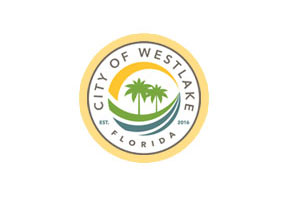There seems to be consensus that an art in public places program will be beneficial to the young and fast-growing City of Westlake as it attempts to develop an identity, but the question is: Who gets to define what is art?
That was at the core of the discussion during the first reading of the proposed ordinance at the Monday, Oct. 11 meeting of the Westlake City Council.
As brought to the council, the ordinance called for an Art in Public Places Advisory Board to be composed of five members and one non-voting high school student, all appointed by the council. It further required that, “no less than four board members shall have a demonstrated knowledge of the arts, such as at least four years of experience related to the arts or an educational degree related to the arts, and possess competence in the evaluation of art, art history, art education, architecture, sculpture, painting and other appropriate media, urban design, or a related field.”
However, once it was established that no taxpayer dollars would be used for the project, the word “shall” in the text came into question, especially for a board that would deal in such an abstract subject.
“Art is representative of freedom,” Whippoorwill Circle resident Ladi Anita Goldwire told the council. “It’s a creative space. Many people noting themselves as artists aren’t tied to the four corners associated with degrees. I think that [language] would be quite limiting. Individuals who show interest, who can demonstrate that they are well-versed and well-traveled, should be sufficient.”
Goldwire also suggested that membership on the board should lean heavily toward Westlake residents over those who simply work in the community.
“Individuals who live in the city have a buy-in,” she said. “They should be the ones making the decisions about what artwork should be on display.”
According to the ordinance, the Art in Public Places Program is designed to promote public art to enhance the economic development of the new community, establish it as a place where public art thrives, and promote the beauty and interest of spaces visible to the public.
City Manager Kenneth Cassel said the intent of the program is more than simply encouraging commercial enterprises to put a painting in their lobby. “We want to encourage building designs that have an artistic look,” he said. “We don’t want to have a lot of run-of-the-mill buildings.”
That sort of diversity “can add to the flavor and uniqueness of a city,” he added.
In the end, the council vote 3-0 to accept the first reading of the ordinance after changing the word “shall” to “should.” Councilman Patric Paul was absent from the meeting, and Councilwoman Katrina Long-Robinson joined and commented via Webex but did not vote due to the requirements of Florida law.
In other business, the council heard about further landscaping plans for the revamped Grove Market Shopping Center, originally constructed in 1999, at the intersection of Seminole Pratt Whitney Road and Persimmon Blvd.
The changes include a new landscaping plan and improvements to trash enclosures, the covered walking area and the parking area — including the removal of some trees and repairs to root-buckled pavement.
As part of the parking improvements on the 9.98-acre site anchored by an incoming Winn-Dixie supermarket, the applicant is proposing 22 parking spaces for golf carts among the 430 parking spaces provided.
The site plan modification does not currently include electrical vehicle charging stations. It does, however, include “state of the art” handicap parking, said Emily O’Mahoney, representing the shopping center’s owners. “We’re really excited to upgrade [the site] and give it a really nice look,” she added, before the modifications were approved 3-0.








